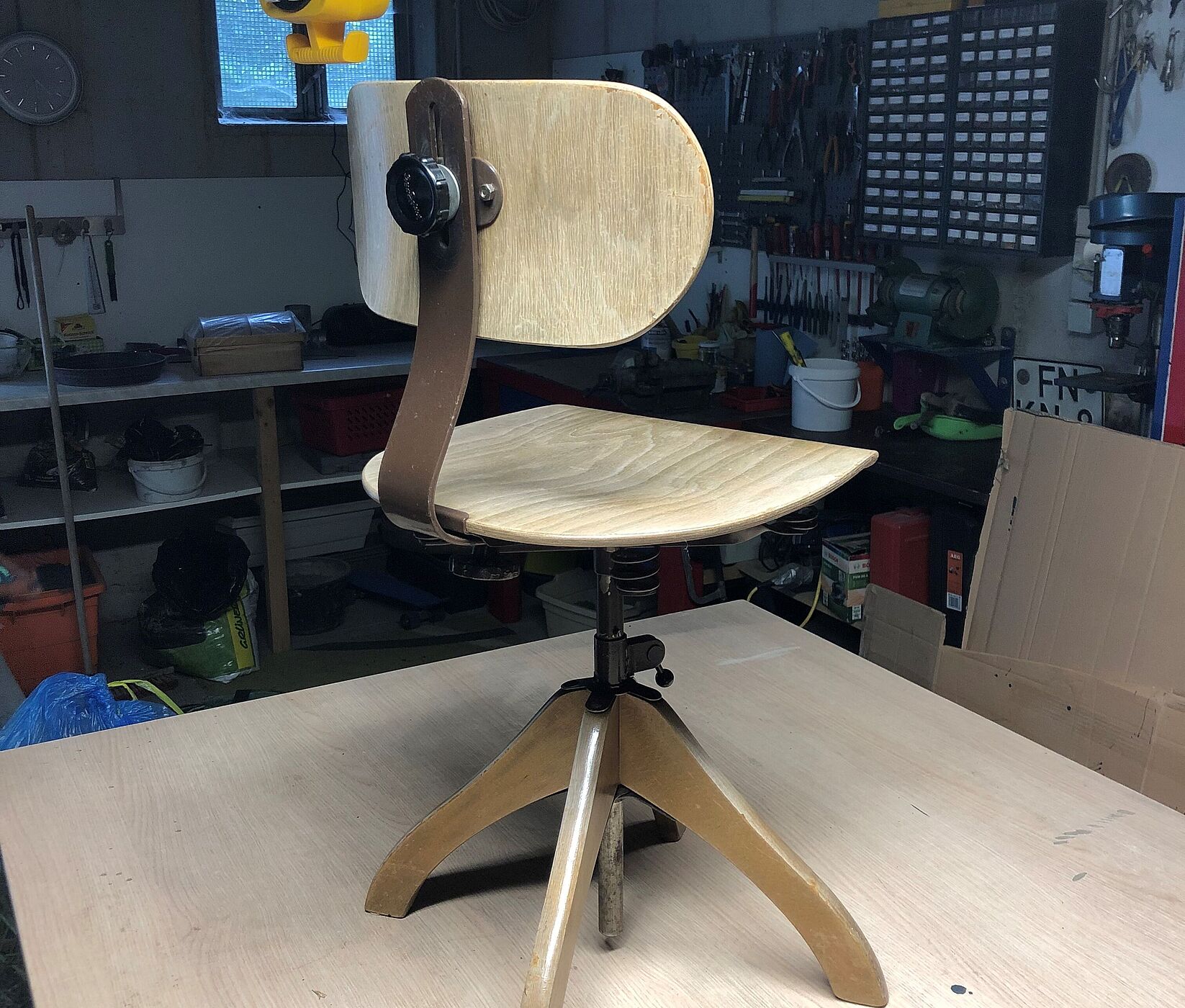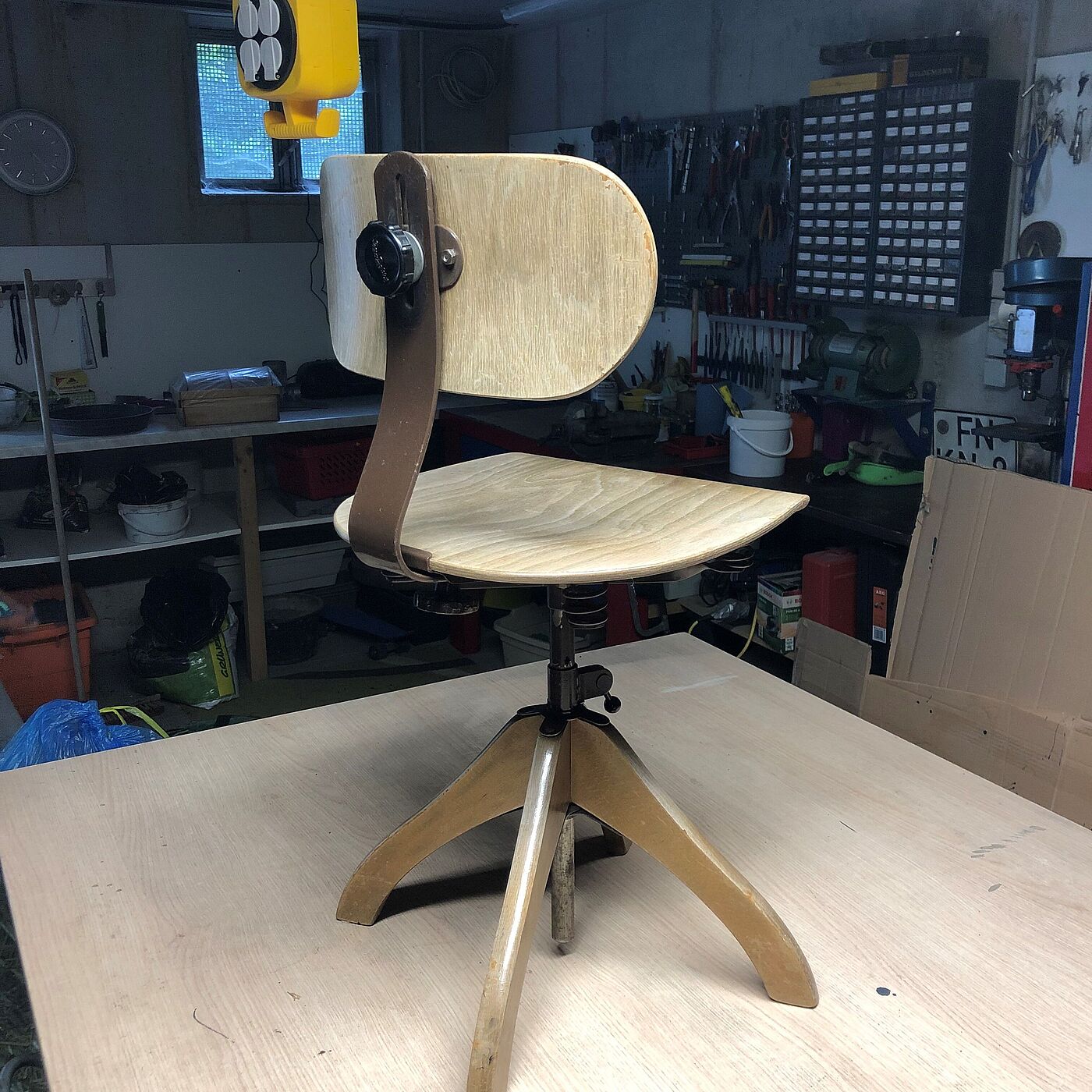BACK
the original
The ultimate in dynamics and sustainability: why the Klöber Polstergleich archetype is so fascinating
Michael Gaupp, a passionately committed office outfitter with a career spanning 25 years, bought an old Klöber Polstergleich chair in spring 2023 and restored it. Read on to find out how it all came about and what he finds so fascinating about this office chair archetype:
How long have you had the Polstergleich?
I found it on 13th April 2023 on eBay Classified Ads. A young family from Überlingen, who apparently bought it many years ago from a businessman also in Überlingen, wanted to sell it. First of all I carefully took it apart and then gave it a gentle sanding down. And I am still absolutely thrilled with this chair! Just think, nowadays everyone’s talking about dynamic sitting, sustainability, regional roots and a long product life – and the Polstergleich was the embodiment of all that decades ago. As a simple swivel chair with a seat that moves in three dimensions and a height-adjustable backrest, as well as seat depth and height adjustment. What more could you want?
What fascinates you about this chair so much that you’re putting your heart and soul into the project like this?
My prized possession is manufactured solely from wood and steel, without any composite materials. It’s held together with slotted-head screws, which allows mono-material recycling of all components. And replacement of any part is straightforward too – there’s no need for customer service or special tools. Another plus point is that it’s produced locally – it’s 100% made in Owingen. Even in 1962 I’m sure it would have ticked the boxes for some of today’s eco certificates. Something else I like is that everything still works perfectly on my old Polstergleich. Literally nothing rattles, squeaks or sticks, it has no worn material or broken trims. It just has a couple of visible flaws, such as scratched lacquer and dust, but that sort of thing gives it a lived-in feel and makes it even more special. I’m also fond of its original lacquer finish – it’s really easy to maintain with two or three coats of oil and a quick polish from time to time – and it still looks amazing.
Can you tell us your personal Polstergleich story?
I admit I’ve got a passion for craftmanship and for getting things done! Coupled with the fact that the place this very chair was built is just a stone’s throw from my own birthplace, Überlingen Maternity Hospital. So I didn’t hesitate to exploit my “connections” and find out everything I could about the Polstergleich. I heard lots of stories during the course of my research, and I spoke to many people who enjoyed sharing their memories with me. It was really lovely!
Where do you plan to keep your Polstergleich when you’ve finished restoring it?
That’s a good question. Well, if I find an enthusiast who would take good care of my pride and joy, I might sell it at some point. But for now it’s going to stay in the family, so that all my family members can have the pleasure of sitting on it.
What can today’s office furniture industry learn from the Polstergleich archetype?
The most important question is “why don’t they make chairs like this anymore?”. Why has this streamlined, simple and highly effective furniture construction principle become so unfashionable? I’d like to see dynamic and sustainable chair concepts like this more often – especially in the times we live in today.

